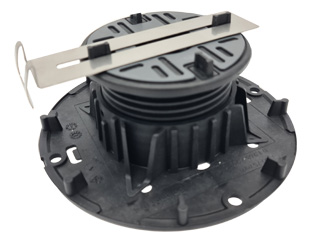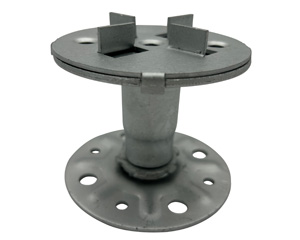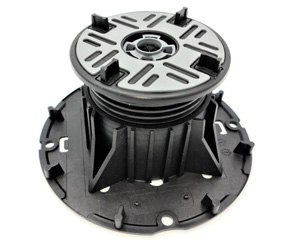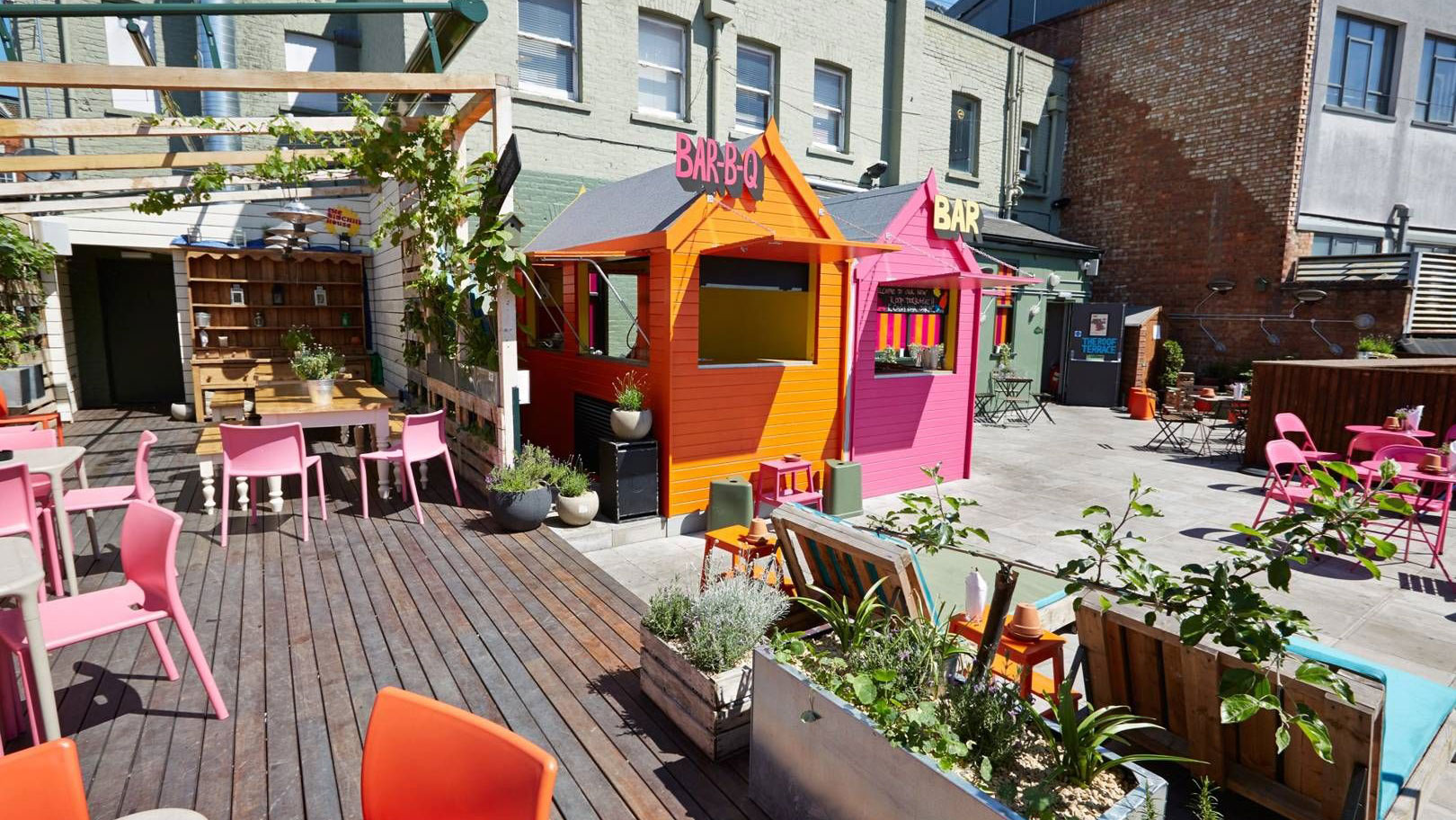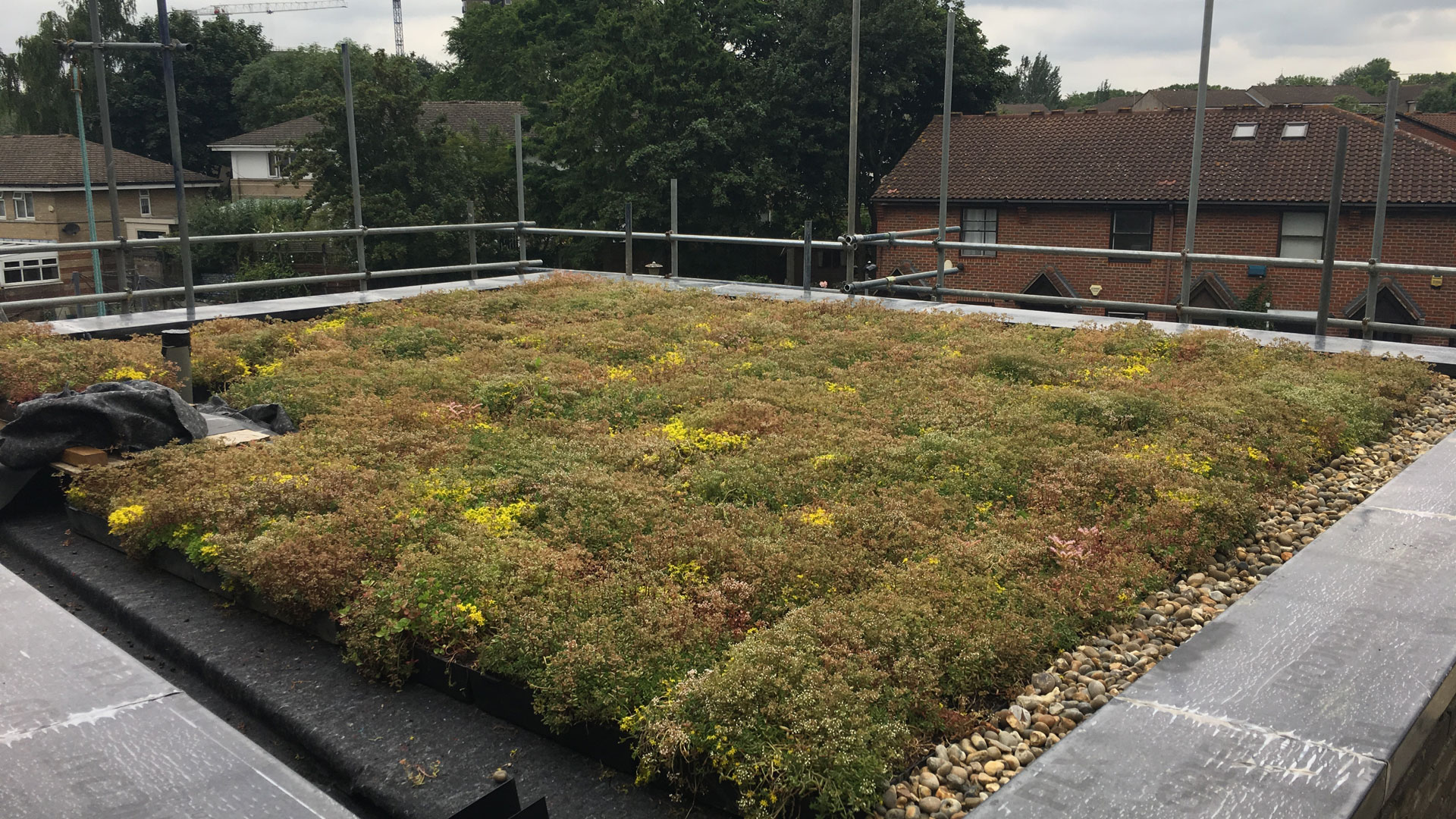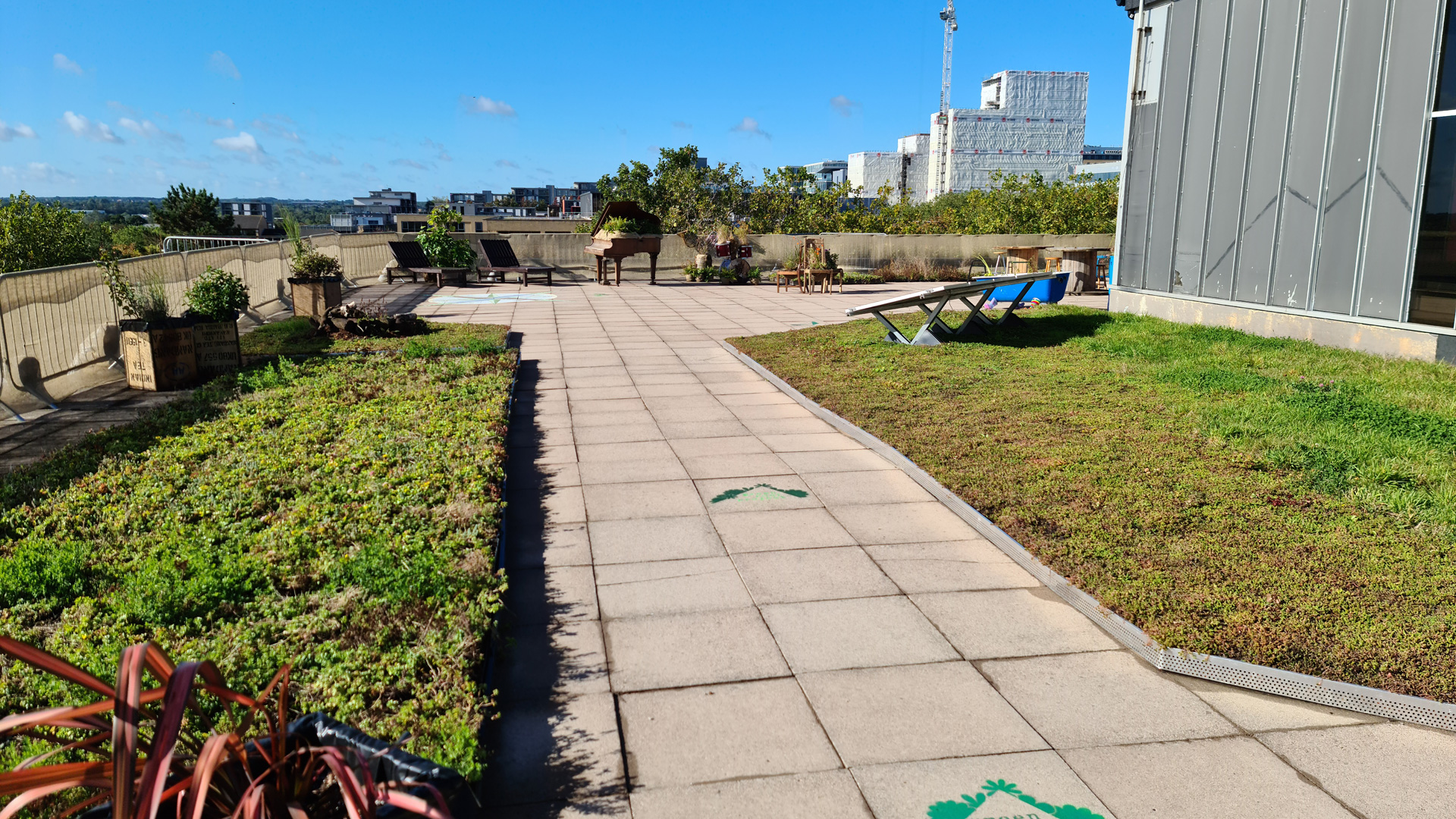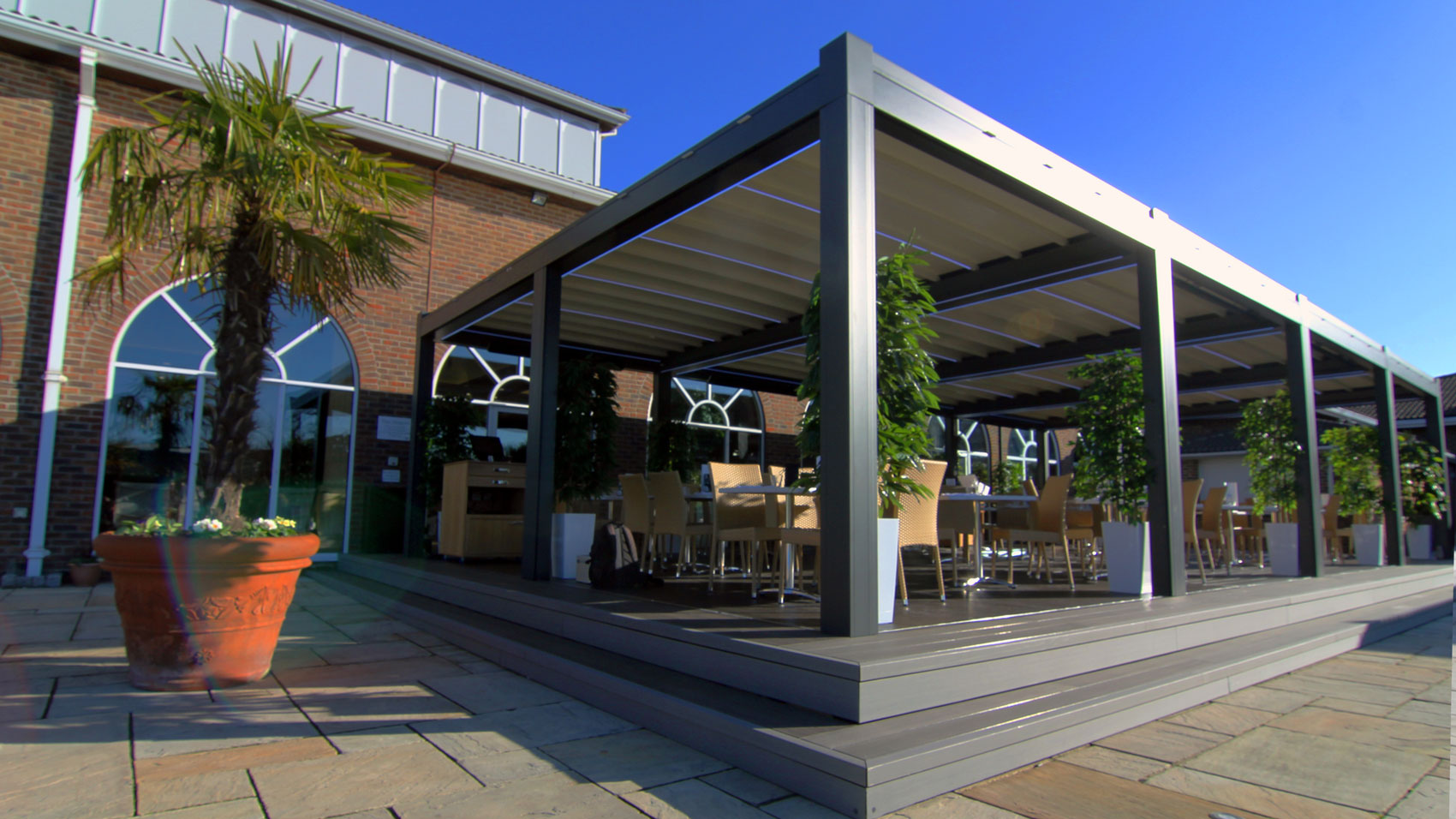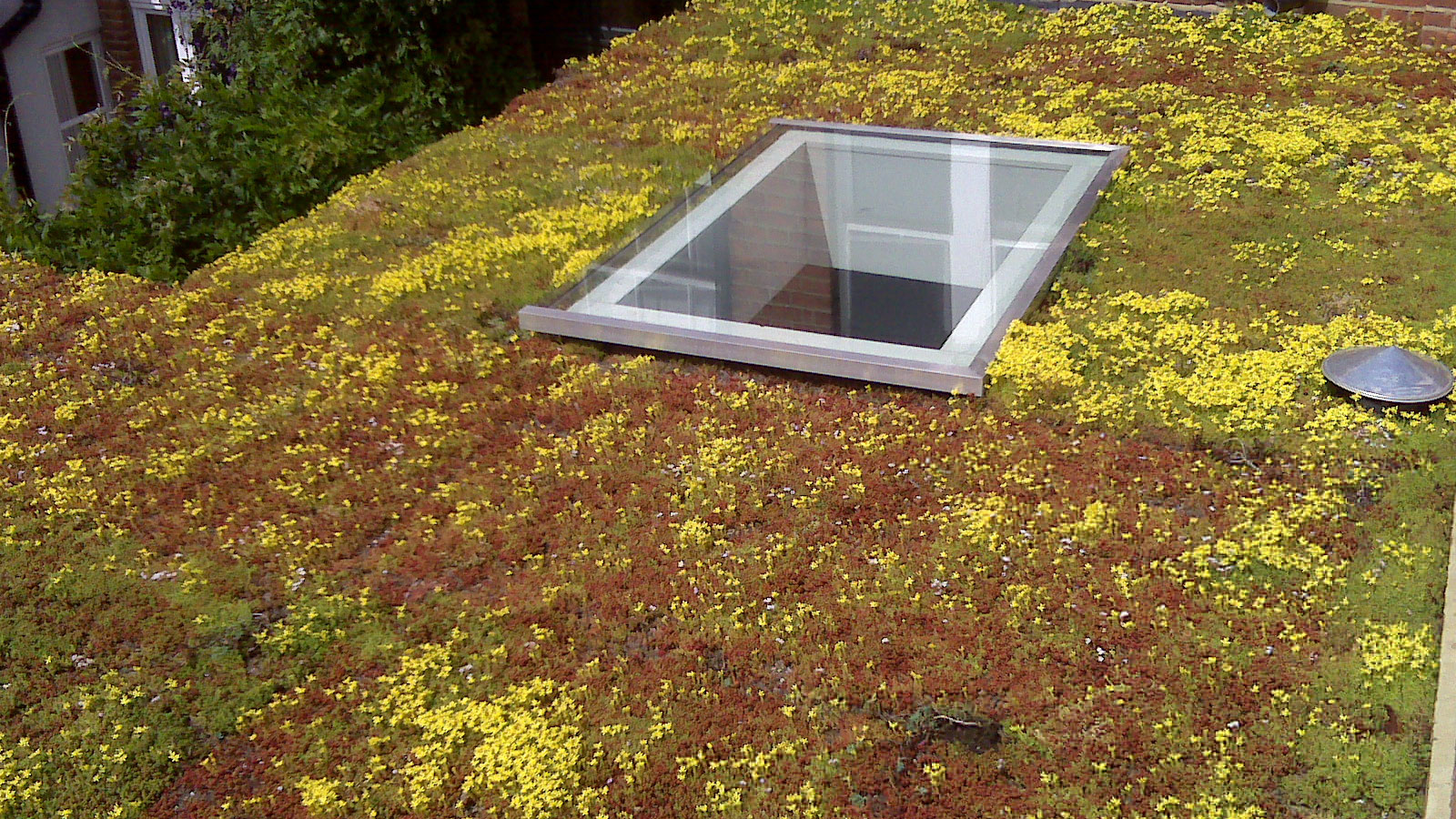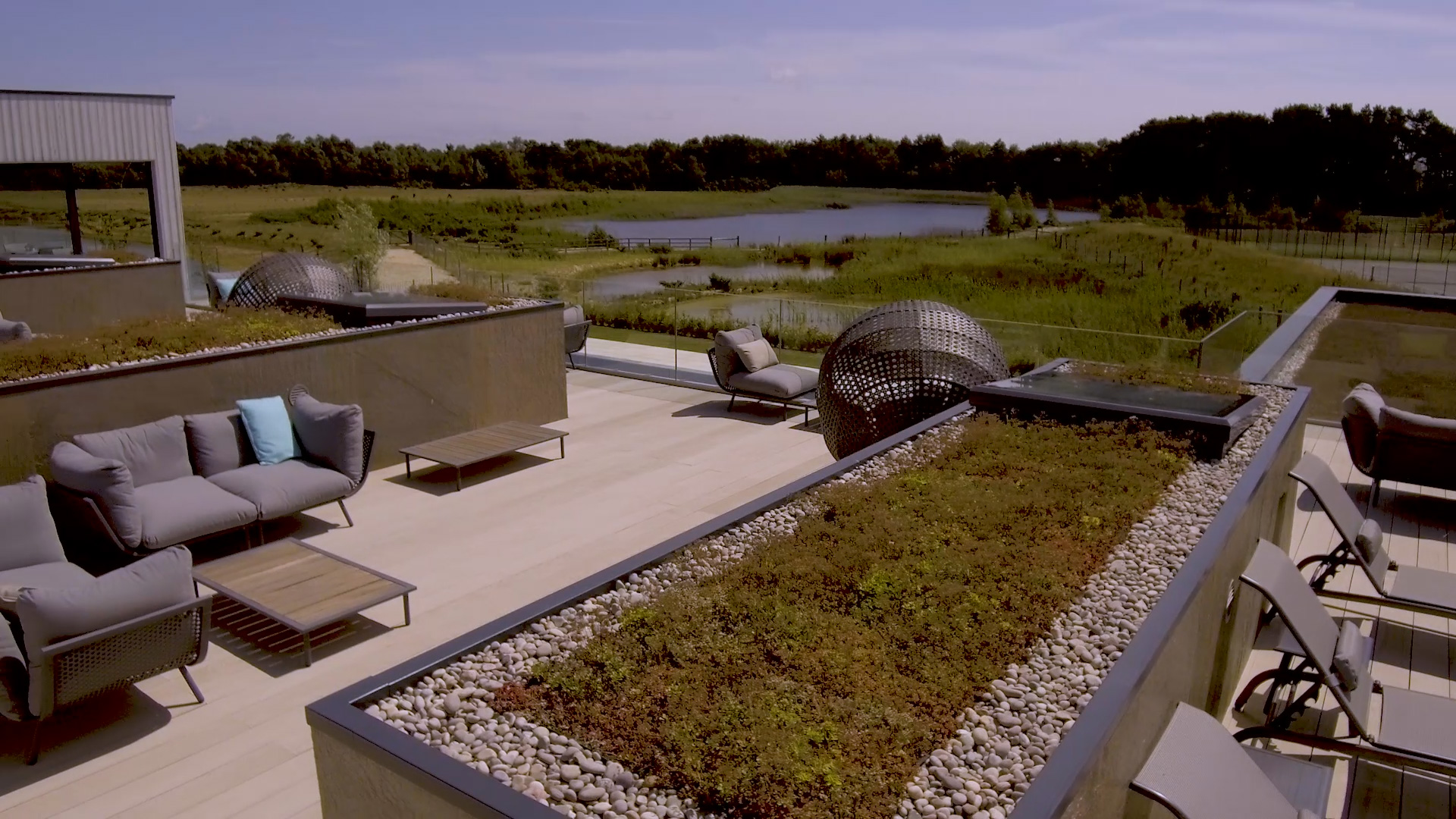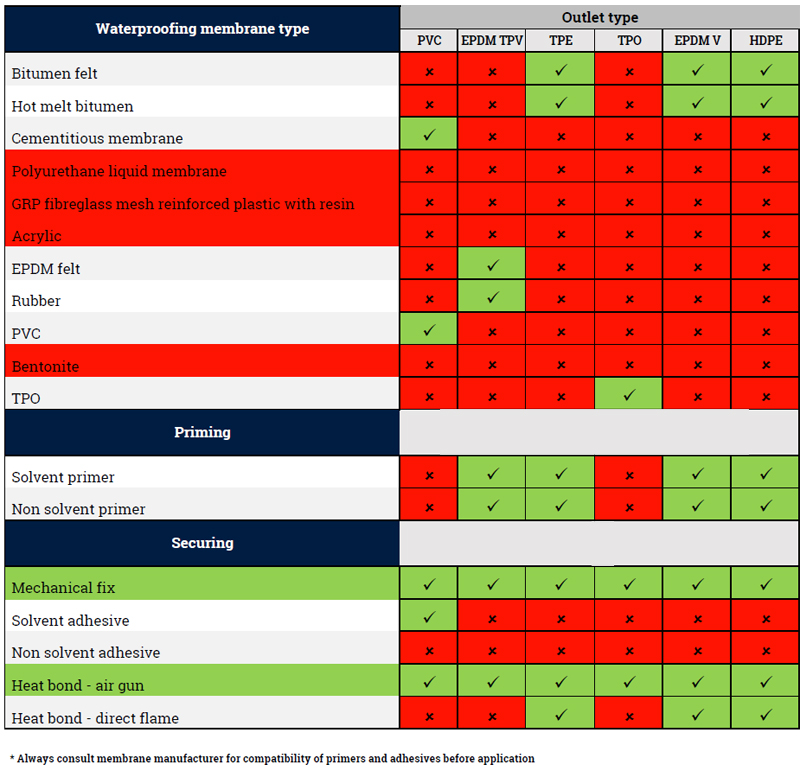Urban development and sustainability go hand in hand in Milton Keynes, where an innovative green roof project is transforming the city’s skyline. At Wallbarn, we have been proud to play a key role in this initiative, providing our cutting-edge M-Tray® modular green roof system to help create a vibrant “garden in the sky” atop the new YMCA building. This project – which saw an entire living roof relocated from one building to another – highlights the flexibility and sustainability of modular green roofing, and stands as a beacon for urban greening best practice. In this article, we explore how the Milton Keynes Green Roof Project came to life, the benefits it brings to the community and environment, and the role that our expertise and technology has played.
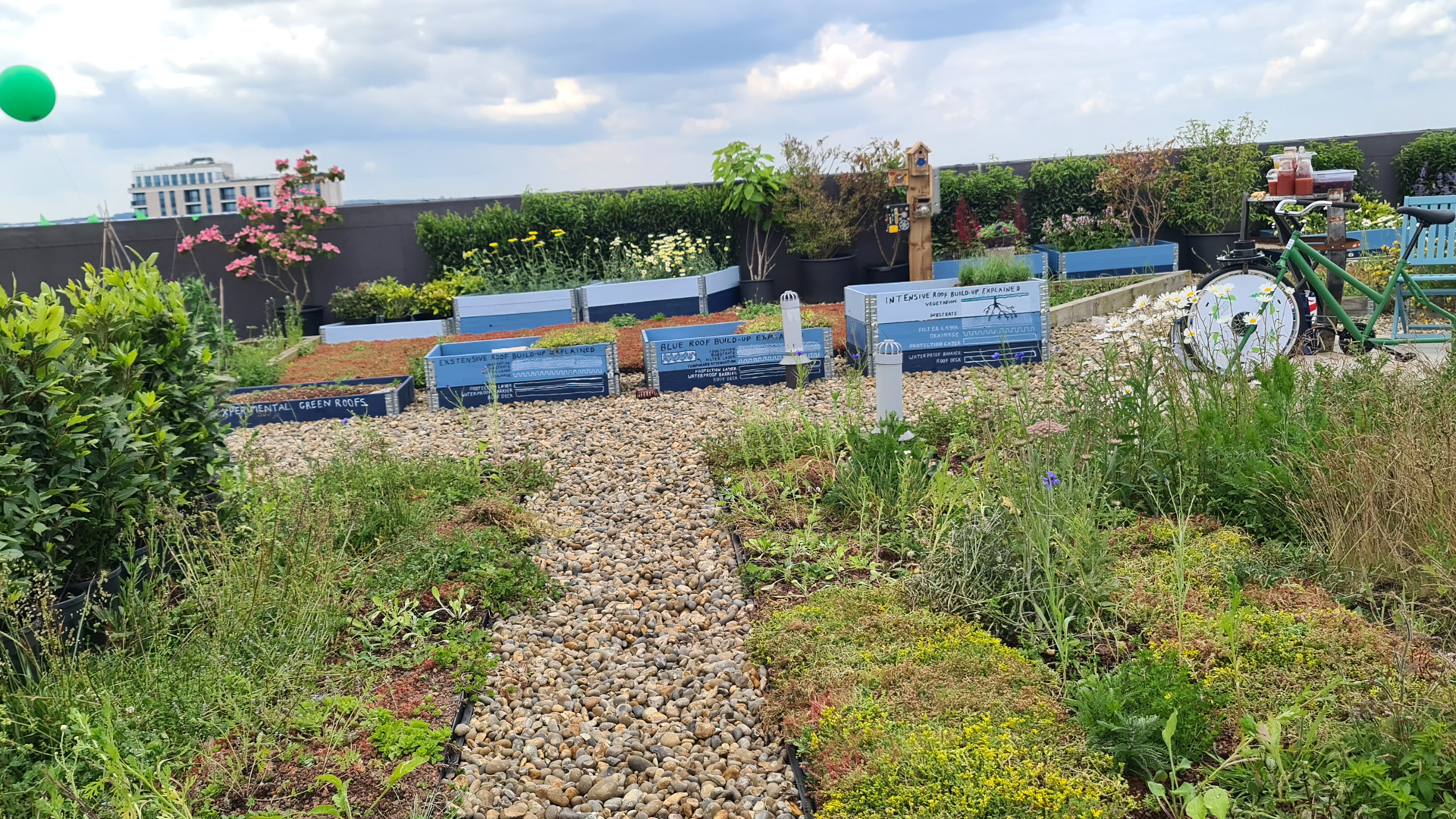
Milton Keynes’ Vision for Greener Rooftops
Milton Keynes has positioned itself as a trailblazer in urban sustainability, with ambitious goals to become carbon neutral by 2030 and carbon negative by 2050. Green infrastructure is a crucial part of this vision, and the city regularly ranks among the UK’s greenest urban areas. Local councillors have described the Milton Keynes “Green Roof Project” as “an asset to the community” and a “key pillar” of the city’s drive to be more environmentally friendly. In practical terms, this means encouraging developers to retrofit or include green roofs on as many buildings as possible – converting unused flat roofs into biodiverse spaces teeming with sedum, wildflowers and other vegetation.
The Green Roof Project began as a showcase installation on the roof of Saxon Court, a former council office building in central Milton Keynes. This pilot project was envisioned as a living laboratory to demonstrate the potential of green roofs in urban settings. It was designed not only to educate the public about the environmental, financial and wellbeing benefits of green roofs, but also to serve as a training ground for young people aspiring to become green infrastructure professionals. Wallbarn supported this vision from the outset – we partnered with Milton Keynes Council and local green-roof specialists Bridgman & Bridgman to supply our modular green roof system, and made a sizeable donation to underpin a long-term development and educational programme for future green roof technicians.

The YMCA Rooftop Garden: From Saxon Court to a New Home
In an unprecedented move, the entire green roof from Saxon Court was later relocated to its permanent home atop the new £13 million YMCA Milton Keynes building. This nine-storey YMCA complex, which provides nearly 200 apartments for young people along with community facilities, became the first building in the UK to be crowned with a green roof transplanted from another site. The relocation, completed in 2023, was a landmark achievement that drew national attention – even BBC News highlighted the feat as a UK first in green roofing. The project was fondly nicknamed “The Green Roof Project” and has since been celebrated as a model of sustainable urban design.
The community enjoys the newly established green roof atop the YMCA Milton Keynes, demonstrating how a once-unused rooftop can become a vibrant garden and social hub. This living roof – originally installed as a temporary showcase on Saxon Court – was carefully moved tray by tray to the YMCA building, where it now thrives as a permanent feature. The successful transplantation underscored the advantages of modular green roof technology: instead of starting from scratch, an entire mature garden was re-used, saving resources and preventing waste. City dignitaries and residents have been able to visit the YMCA roof during events (such as World Green Roof Day) to see first-hand how a living roof can be integrated into a building and learn about the many benefits it delivers – from supporting pollinators to reducing stormwater runoff.
Beyond its ecological role, the YMCA green roof has significant social value. Dubbed a “garden in the sky,” it provides a tranquil outdoor space for residents and visitors in the middle of the city. Raised planters, seating areas and even beehives have been introduced, turning the roof into a community hub for relaxation, urban agriculture and environmental education. What was once a plain flat roof is now bursting with life – wildflowers bloom and bees buzz, volunteers tend to vegetable plots, and young residents can find a peaceful retreat above the busy streets. This transformation shows how green roofs can enhance not just the sustainability of a building, but also the wellbeing of its occupants, offering a tangible connection to nature in an urban environment.
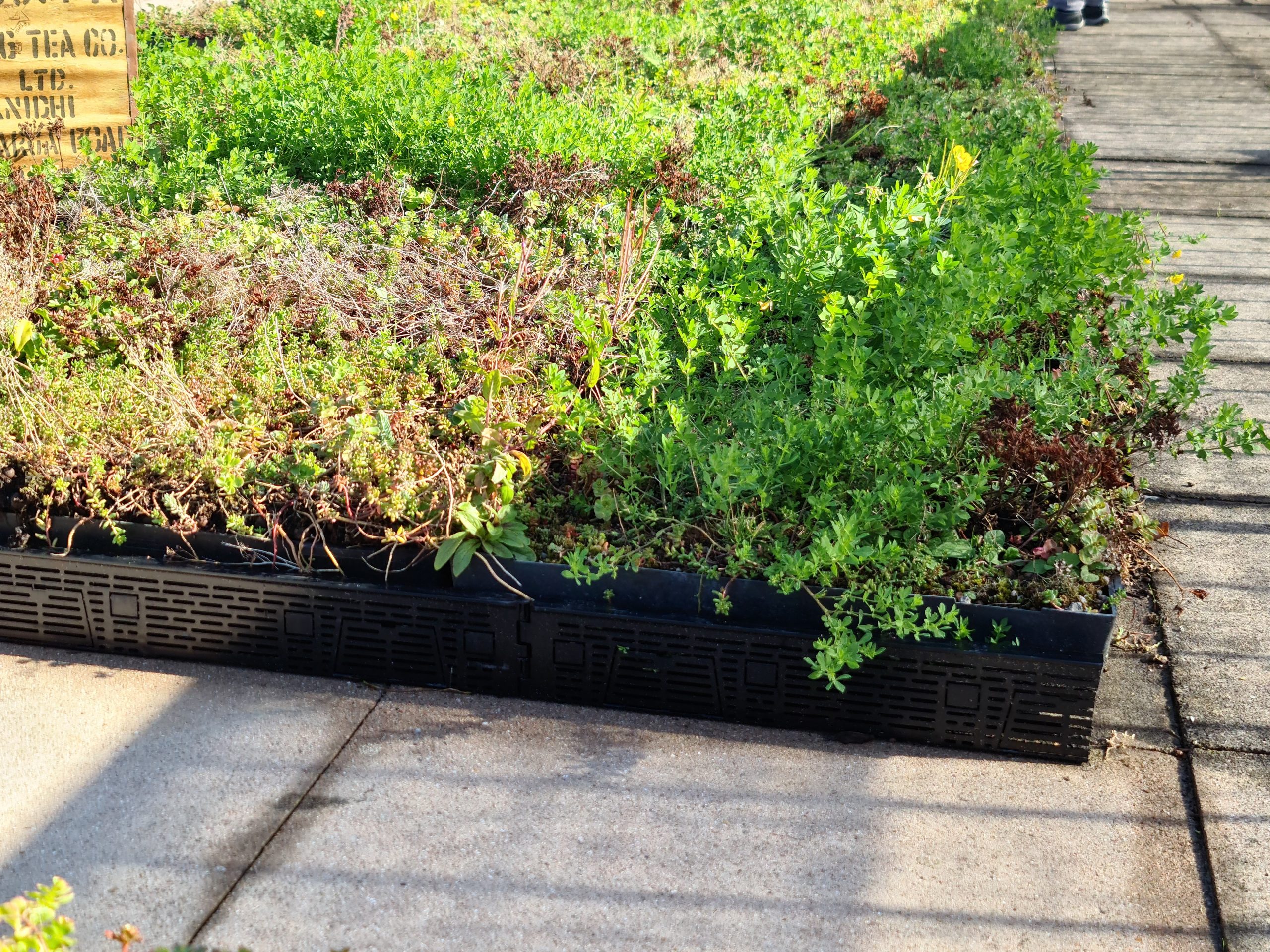
Flexibility and Innovation with Wallbarn’s M-Tray® System
Key to the success of this project was the use of Wallbarn’s M-Tray® modular green roof system, which provided the flexibility and ease-of-use needed to relocate a fully established green roof with minimal disruption. Unlike traditional roll-out green roof systems (which involve loose layers of soil and vegetation that are very difficult to move once established), the M-Tray® consists of interlocking trays or “crates” that contain all the necessary components – from the drainage layer to the substrate soil and plants – in a portable, self-contained tray. Each tray is a one-man lift, meaning it can be picked up by a single installer, and the trays slot together to form a continuous green canopy across the roof.
By using M-Tray®, the team at Bridgman & Bridgman was able to dismantle the Saxon Court roof garden tray-by-tray and palletise the modules for transport, then reassemble them on the YMCA roof like pieces of a giant puzzle. The plants and soil in each module remained intact throughout, ensuring the mature vegetation could simply continue growing in the new location with little to no disturbance. In fact, some parts of the original Saxon Court green roof that used conventional roll-out materials could not be salvaged and had to be disposed of, whereas the modular sections were all saved – a powerful demonstration of the circular economy in action, reusing materials rather than sending them to landfill.
The interlocking design of the trays allows for quick installation in any configuration, even on complicated roof layouts or around plant equipment. Each M-Tray® comes pre-grown with a carpet of hardy sedum or wildflowers, so the roof is green and functioning from day one – there’s no waiting for seeds to sprout or cuttings to establish. The modular approach also means that sections of the roof can be easily lifted up for maintenance or roof membrane inspections, and then replaced, something that would be far more laborious with a traditional green roof. For the Milton Keynes project, this accessibility was invaluable: it ensured that regular building upkeep or future alterations wouldn’t require destroying the green roof. In short, flexibility is built into the system – if a green roof needs to be moved, expanded, or even temporarily removed, M-Tray® makes it feasible with minimal effort.
The M-Tray® solution is also known for its versatility and customisability. Because the green roof is composed of many individual modules, it can adapt to the unique requirements of different sites. In Milton Keynes, for example, the rooftop garden design was tailored to include features like beehives and raised planters for vegetables, and to accommodate slight variations in the roof surface. Different plant palettes can be used in different sections by swapping out certain trays – an important advantage, as the contained nature of each module prevents more aggressive plants from spreading beyond their intended area. From an architectural perspective, this modularity opens up creative possibilities: designers can mix and match sedum, wildflower, and even herb or grass modules to achieve varied textures and colours on the roof, or easily reconfigure the layout if needed in future renovations.
Wallbarn’s M-Tray® is an award-winning British-designed and British grown system, and its performance in the Milton Keynes project has proven its value. “M-Tray allowed us to quickly lift and transport. It is totally unique in that way – you can take M-Tray and turn roofs green overnight,” said Chris Bridgman of Bridgman & Bridgman, the lead trainer of the students who are involved with the project. Indeed, the speed and simplicity of installation meant that what could have been a complex, messy operation (moving a fully grown roof) became a straightforward exercise. Our Wallbarn team provided technical support throughout, with Wallbarn director Julian Thurbin even visiting the site during both the initial installation and the re-installation to lend expertise and witness the process. Julian remarked on seeing the thriving green roof re-established at YMCA: “It just demonstrates how versatile the system is and how easy it is to remove and re-lay. It is also very exciting to see so many residents of the YMCA campus to be so deeply involved with the project. We clearly have some future green roofers here on site which is very encouraging for the future of the industry”. This kind of on-site proof is invaluable when advocating for innovative construction methods – the success at Milton Keynes shows developers and architects that green roofs need not be permanent fixtures, but can be dynamic elements of a building, adaptable to changing plans.
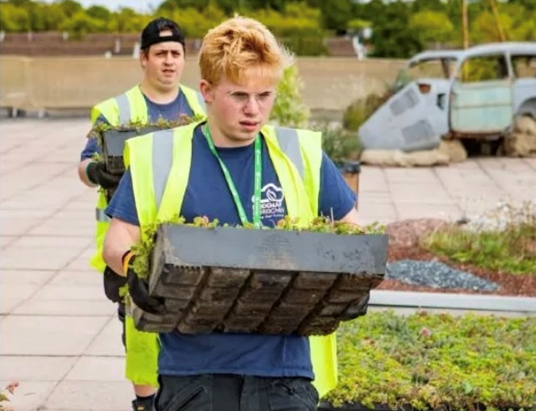
Urban Greening Benefits: Biodiversity, Climate Resilience and Wellbeing
The Milton Keynes YMCA green roof is far more than an aesthetic enhancement; it delivers a suite of urban greening benefits that align with the city’s sustainability goals. By covering what was a hard, impermeable surface with soil and vegetation, the green roof helps to mitigate the urban heat island effect, cooling the building and the surrounding area during hot weather. It also acts as a natural sponge during heavy rainfall – the vegetated trays can absorb and retain up to 60% of rainwater in a deluge, slowing down runoff into the drainage system. This not only reduces the risk of localised flooding (a key consideration for city planners) but also filters the rainwater, improving water quality as it returns to the ground. In essence, every square metre of green roof is working to make the city more climate-resilient.
Biodiversity gains are another major advantage. The YMCA rooftop now hosts a mini-ecosystem of drought-tolerant sedum plants, wildflowers and even small shrubs, which provide habitat and food for insects and birds. Given the alarming decline in UK insect numbers – studies have shown a 78% fall in flying insects since 2004 – such refuges are critically important. Bees and butterflies have been observed fluttering among the blooming sedum, and the project’s caretakers have installed bee hives as well, knowing the roof offers a safe foraging ground for the pollinators. The carefully curated mix of plant species ensures a long flowering season, offering continuous support to urban wildlife. Over time, the green roof can also become home to other beneficial creatures like ladybirds, spiders and beetles, all contributing to an increase in urban biodiversity. In Milton Keynes, where concrete and asphalt once dominated, it is heartening to see nature reclaiming a bit of space – and doing so in harmony with human use of the building.
From a building performance standpoint, the green roof contributes to energy efficiency and longevity. The layers of growing media and vegetation provide additional insulation for the YMCA’s upper floor, keeping the building warmer in winter and cooler in summer. This can lead to, in particular, lower cooling costs for the property – a financial win for operators, and an environmental win through reduced energy consumption. Furthermore, by shielding the roof membrane from UV rays and extreme temperature fluctuations, the green roof is expected to extend the lifespan of the waterproofing beneath. This means fewer roof replacements over the decades, saving money and materials. While installing a green roof is an upfront investment, the long-term savings in energy and maintenance can significantly offset the costs. For developers and property owners, it underscores that green roofs are not just eco-friendly amenities but also sensible investments in the building’s durability and performance.
Perhaps the most immediately felt benefits of the YMCA’s rooftop garden are those of wellbeing and community creation. In the wake of the COVID-19 pandemic, the importance of access to green spaces – even small ones – has become clear. The rooftop garden offers residents and staff a much-needed sanctuary where they can unwind, socialise, or simply enjoy some fresh air and greenery without leaving the building. It’s a place for young residents to take a break from daily stresses, surrounded by flowers and the gentle hum of bees, which can have a calming, restorative effect. Moreover, the space has been used for gatherings such as communal lunches, small concerts and events, rapidly developing a reputation as the place to be in Milton Keynes for creative and community activities. This social aspect adds a new dimension to the benefits of green roofs – they can foster a sense of community and belonging. At the YMCA, the rooftop has truly become a shared asset: part park, part educational garden, part events venue, and always a conversation starter for visitors seeing an unexpected green haven perched above the city.
Community Education: A Living Classroom in the Sky
One of the most inspiring elements of the Milton Keynes Green Roof Project is its focus on education and social impact. From the beginning, the initiative was designed to be a “living classroom” for training the next generation of green roof installers and environmental stewards. In collaboration with the YMCA and Bridgman & Bridgman, Wallbarn helped set up a mentoring and training programme that gives local young people – including those from challenging backgrounds or with special educational needs – hands-on experience in creating and caring for green roofs. Participants in the programme worked on the Saxon Court roof, under guidance from expert trainers and installers, learning everything from laying out the M-Tray® modules to planting and maintenance techniques. They gained practical qualifications and, perhaps just as importantly, confidence and a sense of purpose from being involved in a project with visible, living results.
For these trainees, the roof space was “their space” – a project they could take ownership of and see evolve through their efforts. They didn’t just install a green roof; they helped cultivate it. The students tended to a variety of vegetation types on the roof, experimenting with sedums, wildflowers, and even growing their own vegetables in planters. They also learned about beekeeping through the hives placed on the roof, with a local beekeeper mentoring them on how to care for the bees – which happily had a plentiful supply of nectar thanks to the M-Tray® planting scheme. This holistic approach meant that the rooftop became an educational ecosystem: a place to learn horticulture, ecology, carpentry (through building planters and installations), and even event management as they organised community gatherings on the roof.
The educational aspect continued with the relocation to the YMCA building. The young trainees who started at Saxon Court were able to carry their skills over to the new site, helping to reinstall and now maintain the green roof on a building that houses over 200 of their peers. The sense of pride and ownership is palpable – the roof they helped build is now part of their home, a permanent fixture that they can share with fellow residents. Through this programme, three YMCA residents have already become qualified green roof installers, and more students are joining the scheme as it grows. For Wallbarn, being able to support this kind of community capacity-building is immensely rewarding. By donating the M-Tray® system and providing technical support, we aimed to not only green a few rooftops but also help seed a new workforce skilled in sustainable landscaping and construction. As the green roof market expands rapidly in the UK, ensuring a new generation of trained green roof experts is ready to support the industry is essential – and Milton Keynes is now ahead of the curve in producing those experts.
It’s worth noting that the visibility of the YMCA roof – being on one of the taller buildings in the area – has also turned it into a public educational tool. The roof features a viewing area for visitors, and when you look out from that vantage point across the flat expanse of Milton Keynes, it powerfully illustrates the untapped potential for greening other rooftops in the city. The YMCA project thus serves as a demonstration site where architects, planners, and property owners, even the Milton Keynes Mayor can be shown the real-world performance of a green roof, and where young people can be inspired to consider careers in sustainable construction. It’s a community project in every sense: built by the community, benefitting the community, and educating the community.
Inspiring a Green Roof Revolution
The success of the Milton Keynes YMCA green roof is already encouraging wider adoption of green roofs in the region. Developers are being encouraged by local authorities to follow the YMCA’s example and integrate green roofs into upcoming projects, whether commercial or residential. The council and the Mayor of Milton Keynes have enthusiastically backed the initiative, recognising it as a key step towards the city’s environmental objectives. With an estimated six full-size football pitches worth of flat roof area available for retrofitting in Central Milton Keynes alone, the potential for scaling up is enormous. Each new green roof can collectively create a patchwork of urban green spaces – a true “green roof revolution” is on the horizon, with Milton Keynes acting as a beacon city for what’s possible.
From Wallbarn’s perspective, the Milton Keynes project exemplifies how our modular approach can unlock opportunities that previously might have been dismissed as impractical. The idea of relocating a green roof, for instance, would have sounded far-fetched to many – yet we’ve now proven that with the right system, even temporary installations can be moved and given a second life. This opens up interesting possibilities: for example, meanwhile use of green roofs on short-term sites (like pop-up venues or interim uses of land) need not be wasted effort if the greenery can later be transferred to a permanent site. It also means buildings under renovation can temporarily lift sections of their green roof during works and reinstate them later, rather than destroying and rebuilding anew. Such flexibility could be a game-changer in urban planning and design, adding a new layer of adaptability to green infrastructure.
The Milton Keynes Green Roof Project also highlights the importance of partnerships in driving innovation. It was a collaborative effort – the local council provided support and vision, Chris Bridgman of Bridgman & Bridgman brought specialist installation expertise and a great deal of passion, the YMCA offered the site and community engagement, and Wallbarn delivered some of the technology and materials. Together, we achieved something that none of us could have done alone. This model of public-private-community partnership can serve as an inspiration for other cities and organisations. By pooling resources and knowledge, and by having a bold vision, it’s possible to turn an underutilised roof into an ecological asset and a community treasure.
At Wallbarn, we are especially delighted that our M-Tray® system has been a catalyst in this green roof revolution. Our team has a track record of pioneering green roof applications – from standard offices and homes to more unconventional projects like “bee bus stops” where bus shelter roofs are turned into mini pollinator gardens. The Milton Keynes YMCA roof, however, is a flagship example that encapsulates everything we stand for: innovation, sustainability, flexibility, and community benefit. We hope its story will inspire architects and developers far and wide to consider modular green roofing in their designs. Not only can it adapt to the needs of complex urban projects, but it can also deliver tangible environmental gains and serve the people who use those spaces.
Conclusion: A Model for Sustainable Urban Design
The Milton Keynes YMCA green roof project demonstrates that with creative thinking and the right technology, urban rooftops can be so much more than wasted space. They can be moved, reused, and reimagined to meet the evolving needs of the city – all while supporting biodiversity, improving climate resilience, and enhancing quality of life. By embracing the M-Tray® modular system, Milton Keynes has set a precedent that green roofs are not only beneficial but also highly practical and adaptable. The project stands as a testament to Wallbarn’s ethos of driving innovation in green infrastructure: from concept to reality, we strive to provide solutions that make sustainable design easier for those who plan and build our cities.
As Milton Keynes continues its journey towards becoming one of the greenest cities in the world, we at Wallbarn look forward to supporting more projects like this. The YMCA rooftop garden will flourish for years to come, a living symbol of what modern green roofing can achieve. It is our hope that this success story will spark conversations in boardrooms and design meetings across the country – prompting questions like “Can we include a green roof, and should it be modular?” When the answer is yes, Wallbarn is ready to help deliver a flexible, sustainable green roof that can transform not just a building, but an entire community. The Milton Keynes project has shown the way, and now the green roof revolution is truly underway.


